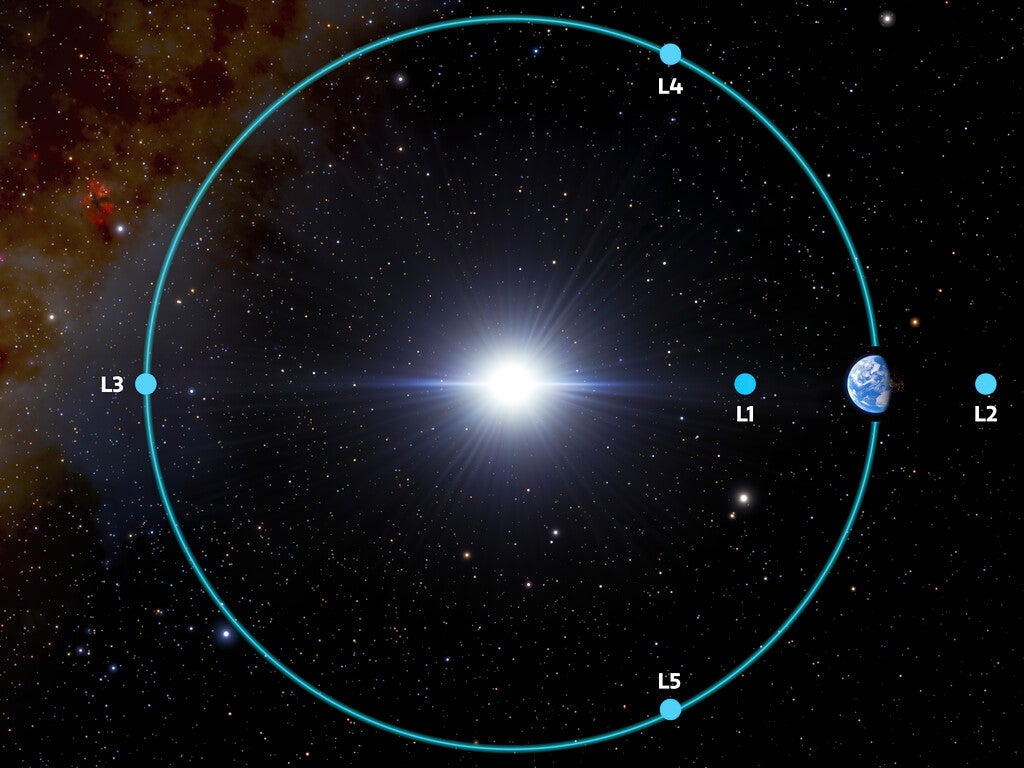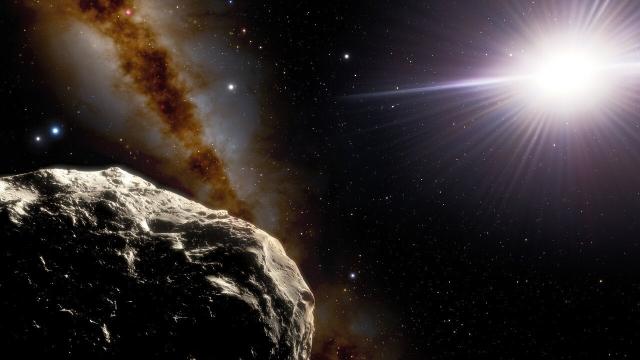In December 2020, astronomers stumbled upon an object that seemed to be travelling a bit ahead of us in our orbit around the Sun, but they weren’t entirely sure. New observations now confirm this suspicion, revealing the asteroid to be just the second known Earth Trojan.
In addition to confirming asteroid 2020 XL5 as being a transient Earth Trojan, the new Nature Communications study provides updated estimates of the object’s orbit, size, and physical characteristics. The asteroid is three times larger than 2010 TK7, the only other known Earth Trojan, and it will remain a Trojan for the next 4,000 years. The new paper, co-authored by astronomer Toni Santana-Ros from the University of Barcelona in Spain, also shows that our biggest ground-based telescopes can be aimed low on the horizon to spot things that have previously gone unseen.
Trojans are small celestial bodies that share a planet’s orbit around the Sun, and they do so by parking in gravitationally stable spots known as Lagrange points (or, more accurately, they perform small orbits around Lagrange points). In this case, 2020 XL5 has settled into the fourth Lagrange point, where it sits 60 degrees ahead of Earth. Trojan asteroids are common in the solar system, including a huge number locked in Jupiter’s orbit.

2020 XL5 was discovered on December 12, 2020, by the Pan-STARRS1 survey telescope in Hawai‘i. Preliminary observations suggested its Trojan nature, but insufficient observational evidence and uncertainties about the object’s orbit made confirmation difficult.
“In order to improve the knowledge of its orbit, we performed follow-up observations in February and March 2021, which allowed us to calculate with great accuracy the orbit of the object,” Santana-Ros explained to me in an email. “In turn, this allowed us to find ancillary data of the object in the data archive.”
Those follow-up observations were performed by three ground observatories: the 4.1-metre Southern Astrophysical Research (SOAR) Telescope on Cerro Pachón in Chile, the 4.3-metre Lowell Discovery Telescope in Arizona, and the European Space Agency’s 1-metre Optical Ground Station in the Canary Islands. This was combined with archival data gathered between 2012 and 2019 as part of the Dark Energy Survey.
“These were very challenging observations, requiring the [SOAR] telescope to track correctly at its lowest elevation limit, as the object was very low on the western horizon at dawn,” Cesar Briceño, a co-author of the study and a researcher at NOIRLab, said in a press release.
A photometric analysis of 2020 XL5 revealed it to be a C-complex type asteroid — dark and carbon-rich objects that represent the most common type of asteroid in the solar system. The object measures 1.18 km wide, making it larger than the first known Earth Trojan, 2010 TK7. 2020 XL5 will hang out as an Earth Trojan for another 4,000 years, after which time it will come free and venture through space on a new trajectory.
2020 XL5 is not a primordial Trojan, meaning it hasn’t been parked in the L4 point since the time of our planet’s birth. That’s unfortunate because primordial Trojans “can provide us with information about the formation of its host planet” and, in turn, keys to a better understanding of solar system evolution, Santana-Ros said. Interestingly, 2020 XL5 only became a Trojan around 600 years ago.
The discovery of this Earth Trojan “confirms that 2010 TK7 is not a rare exception and that there are probably more bodies populating L4 and probably L5 of the Earth-Sun system,” explained Santana-Ros, adding that this will “encourage us to keep enhancing our survey strategies to find, if it exists, the first primordial Earth Trojan.”
The new object is also interesting in that it could be the target of a future fly-by mission, or even a cool place to set up a space station or mine for resources. In the meantime, there’s the Lucy mission to look forward to. Launched late last year, the NASA probe is currently en route to Jupiter, where it will explore the Jovian Trojans for a 12-year period.
